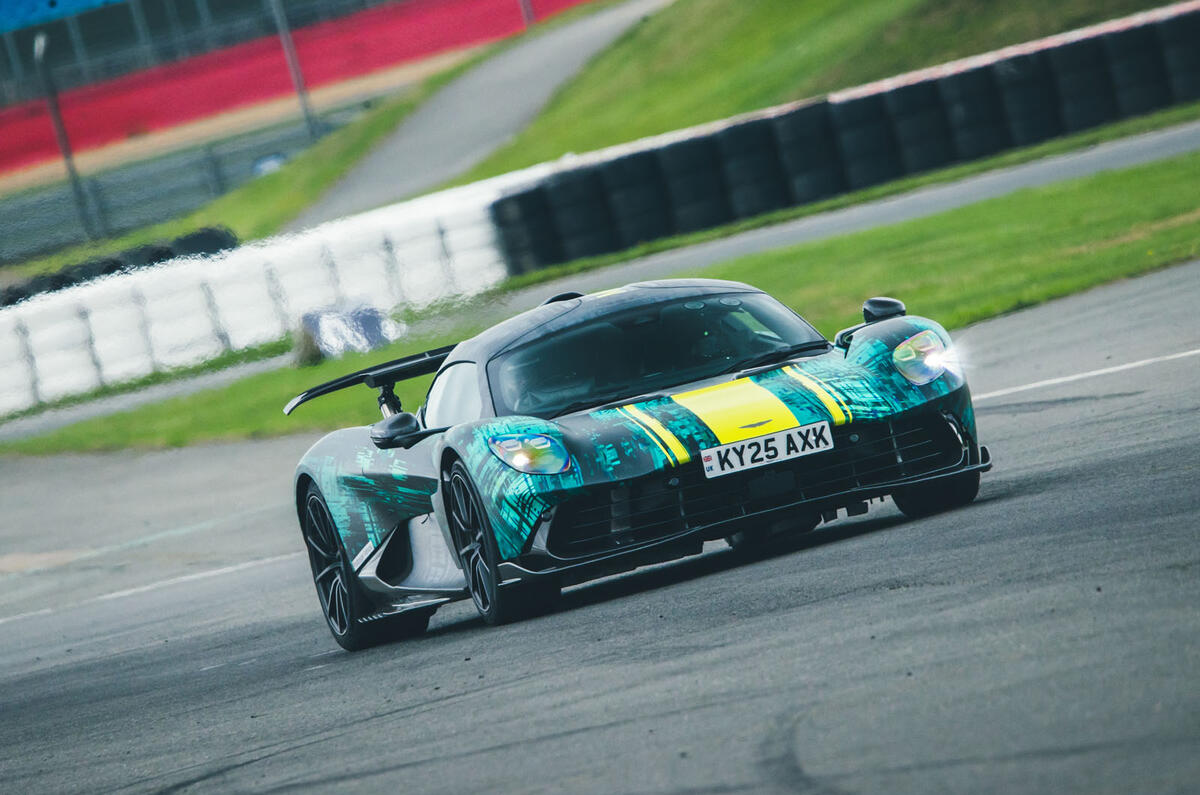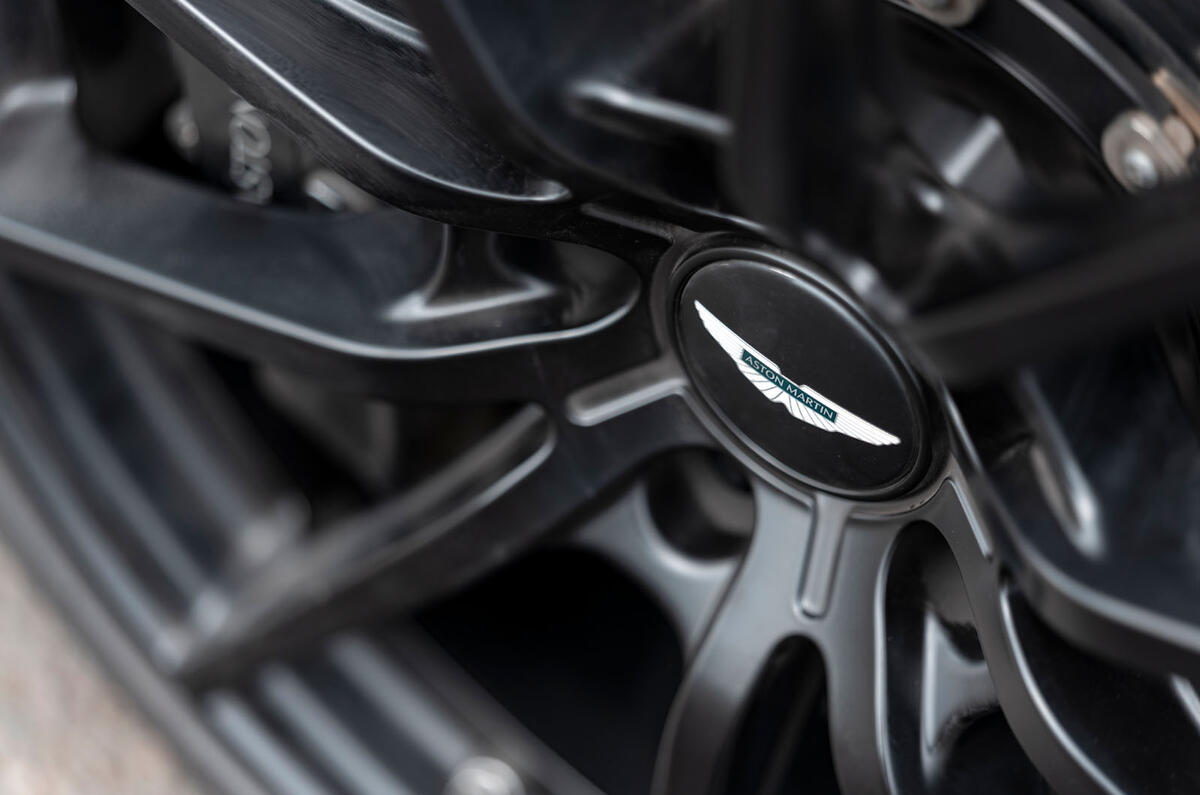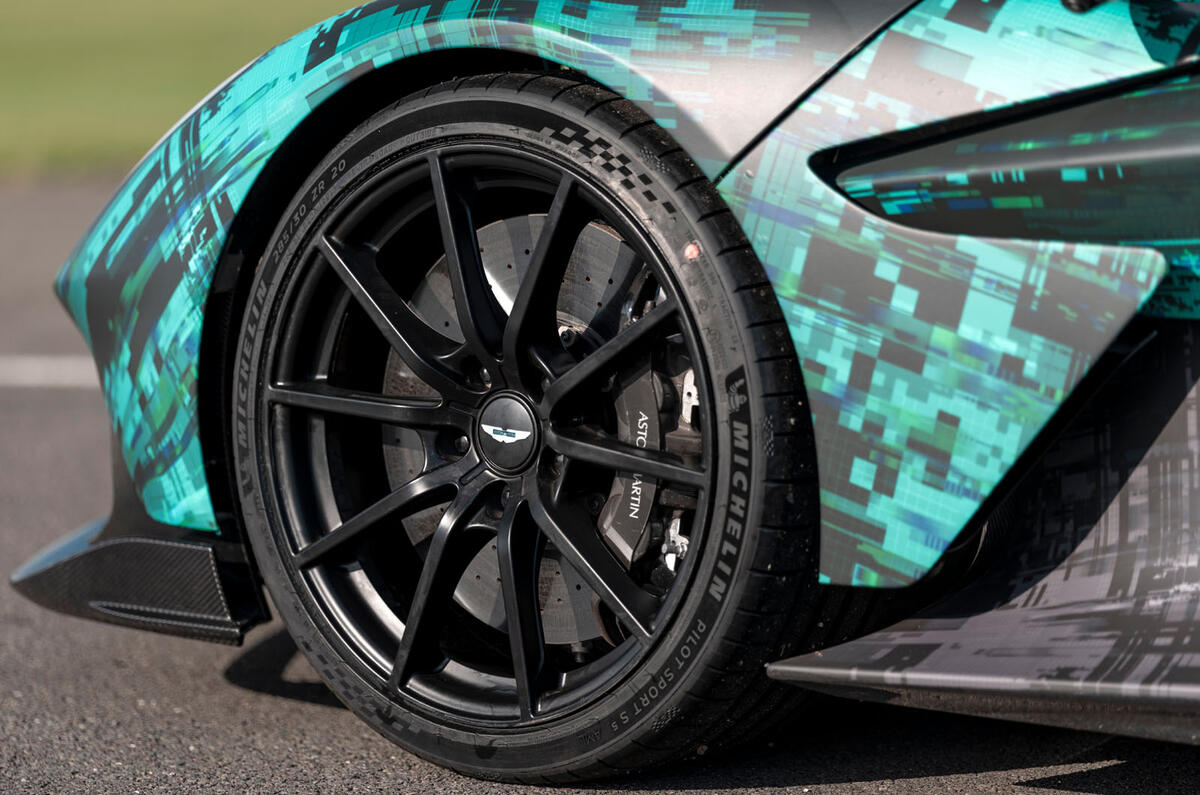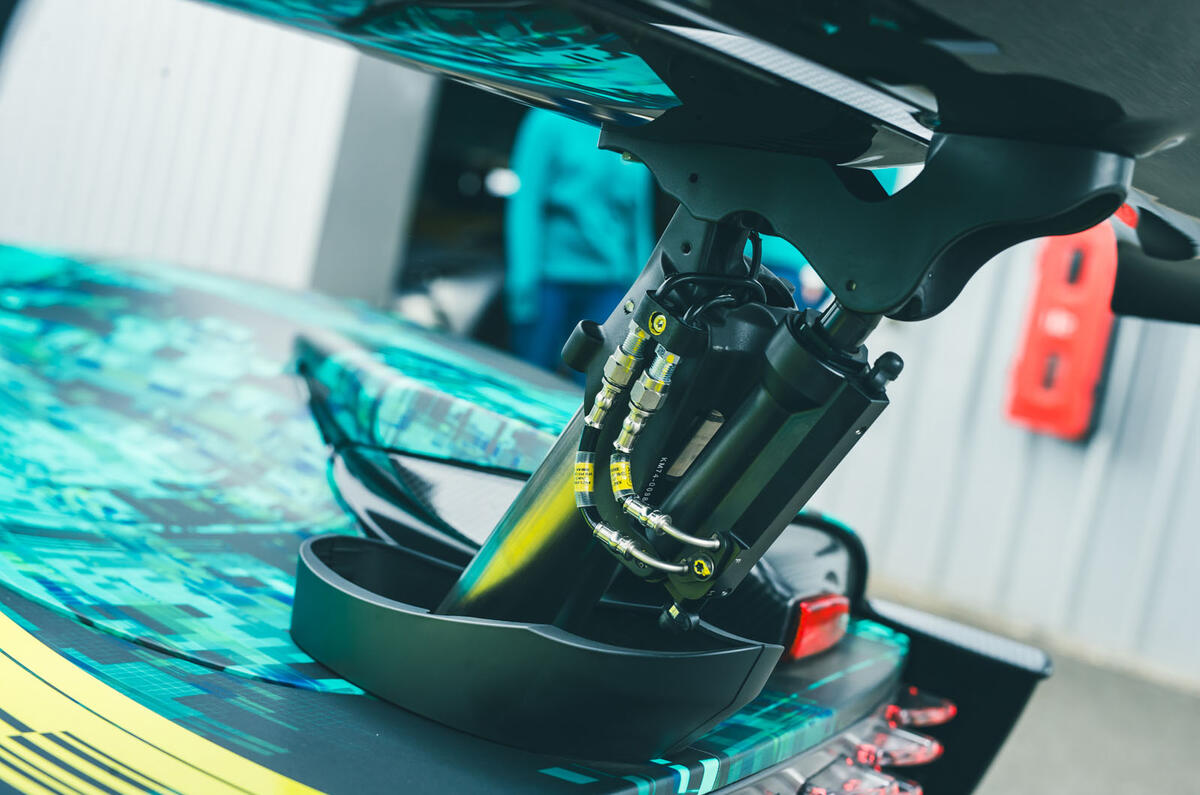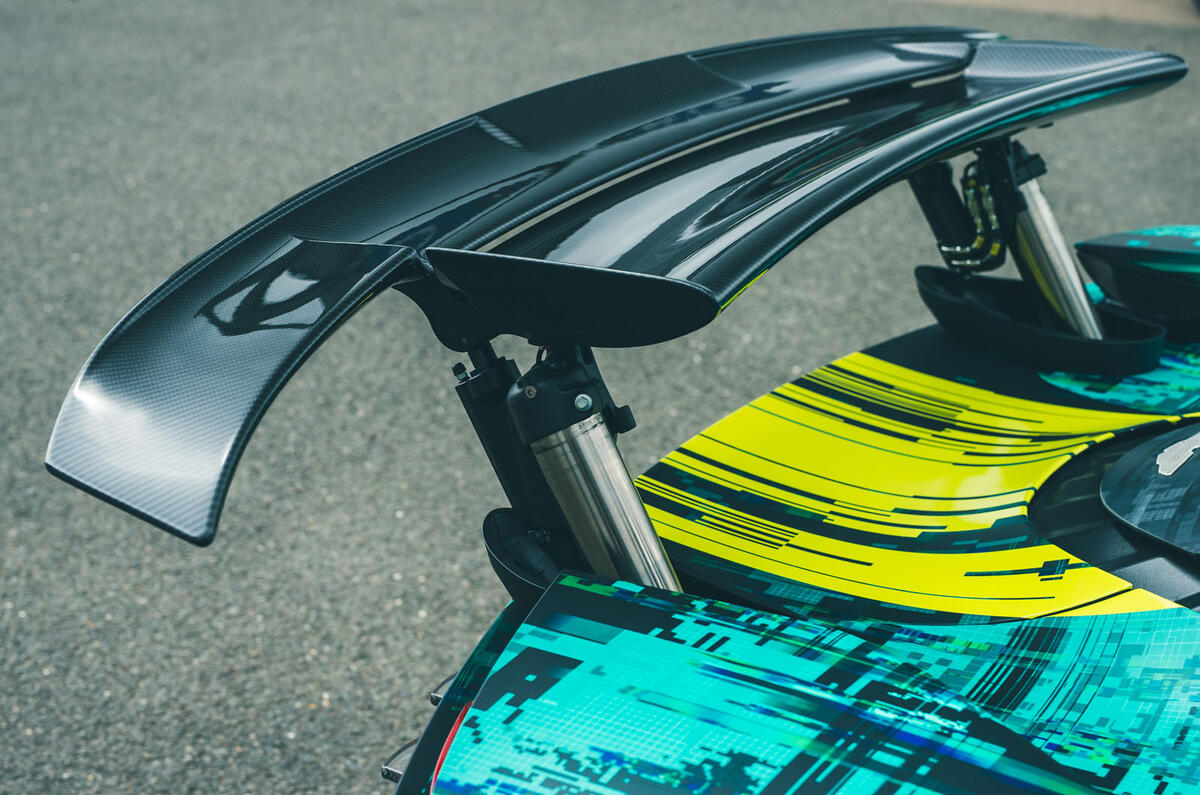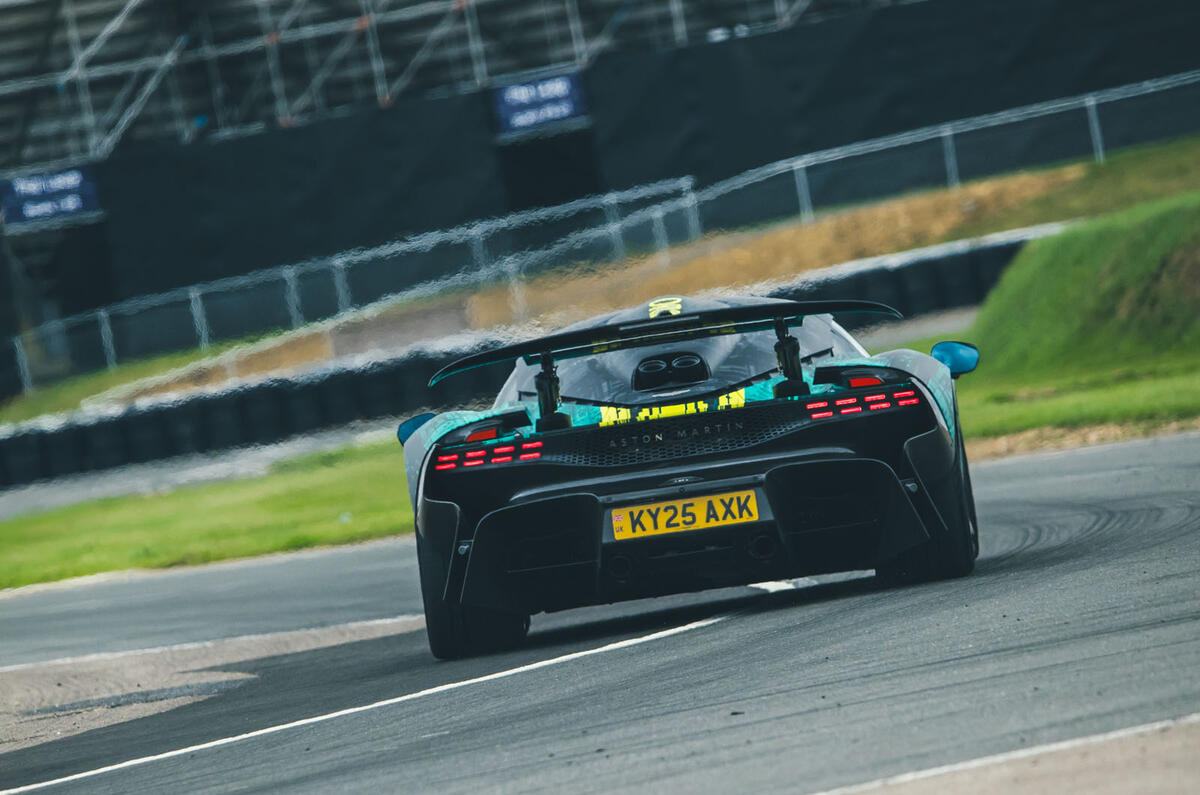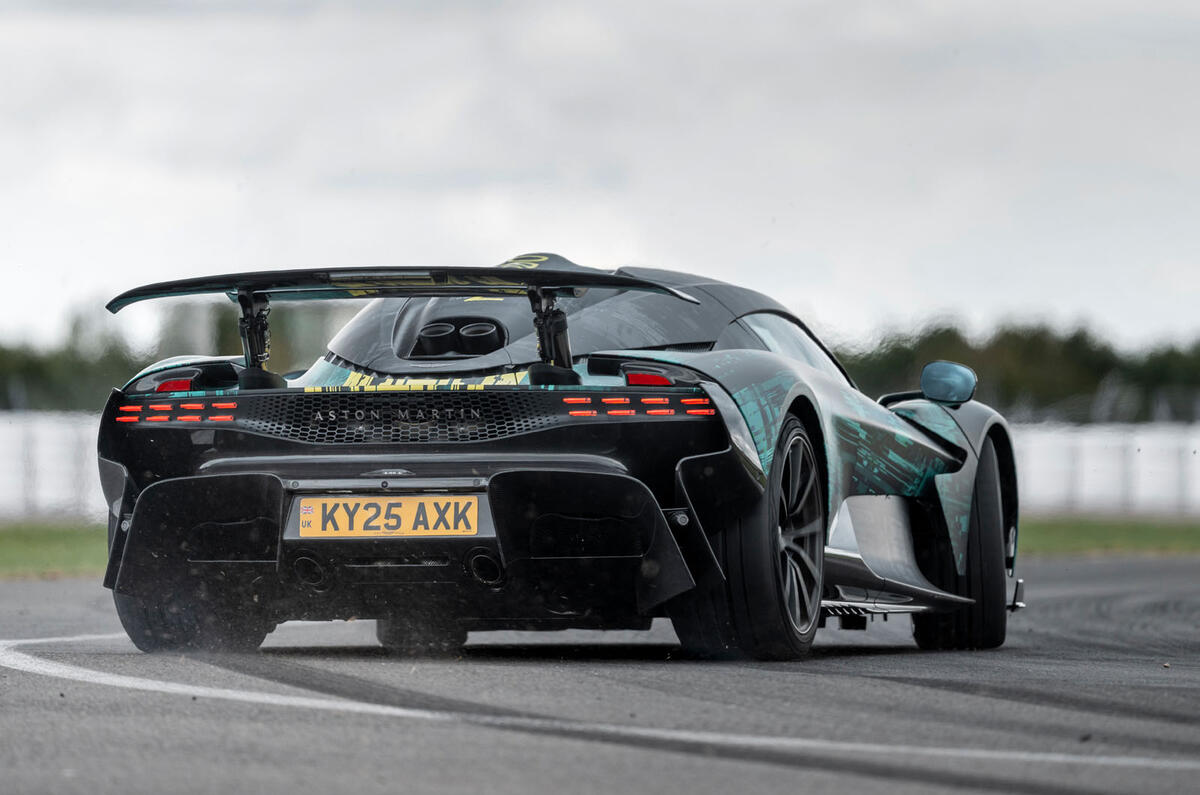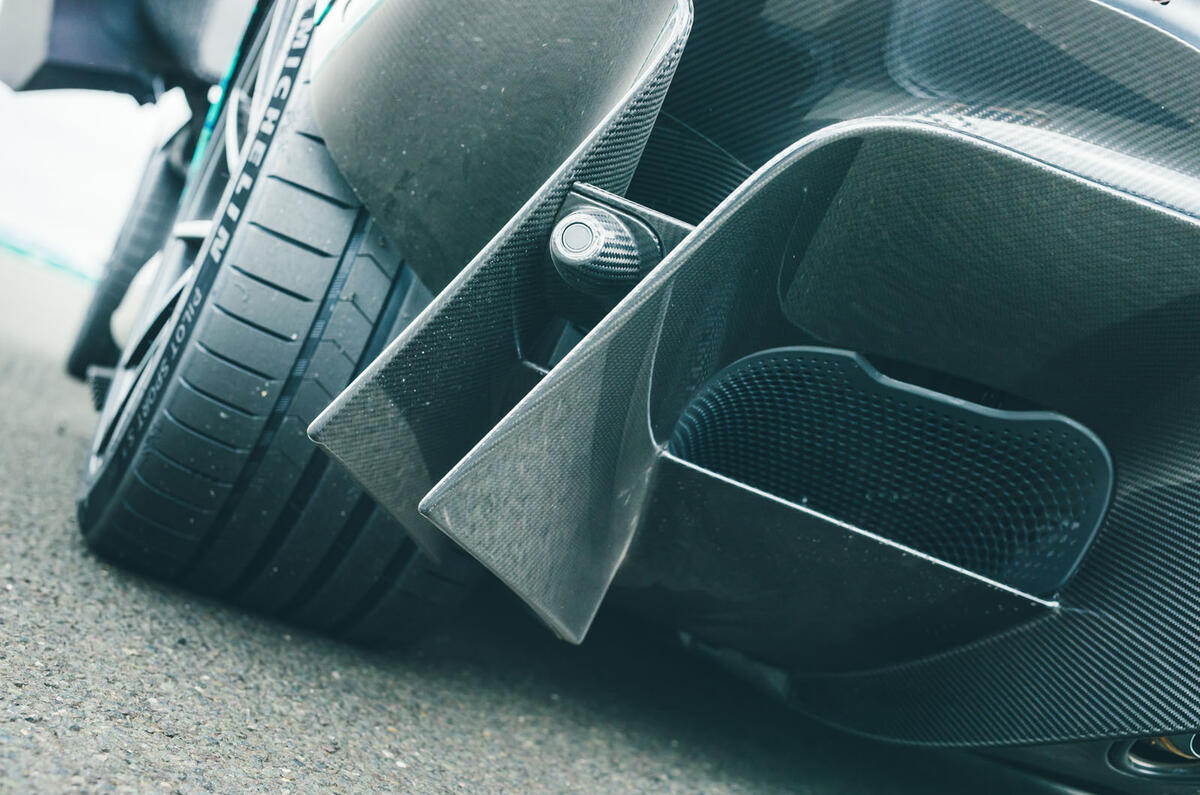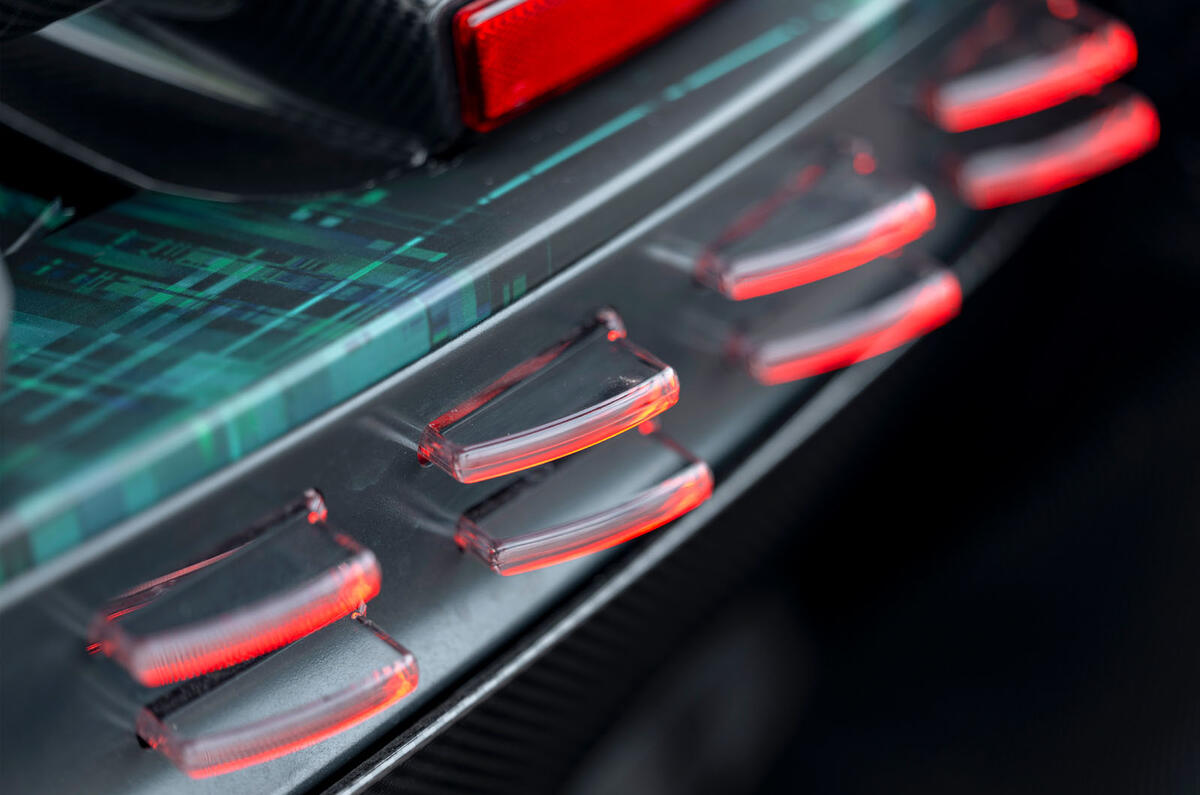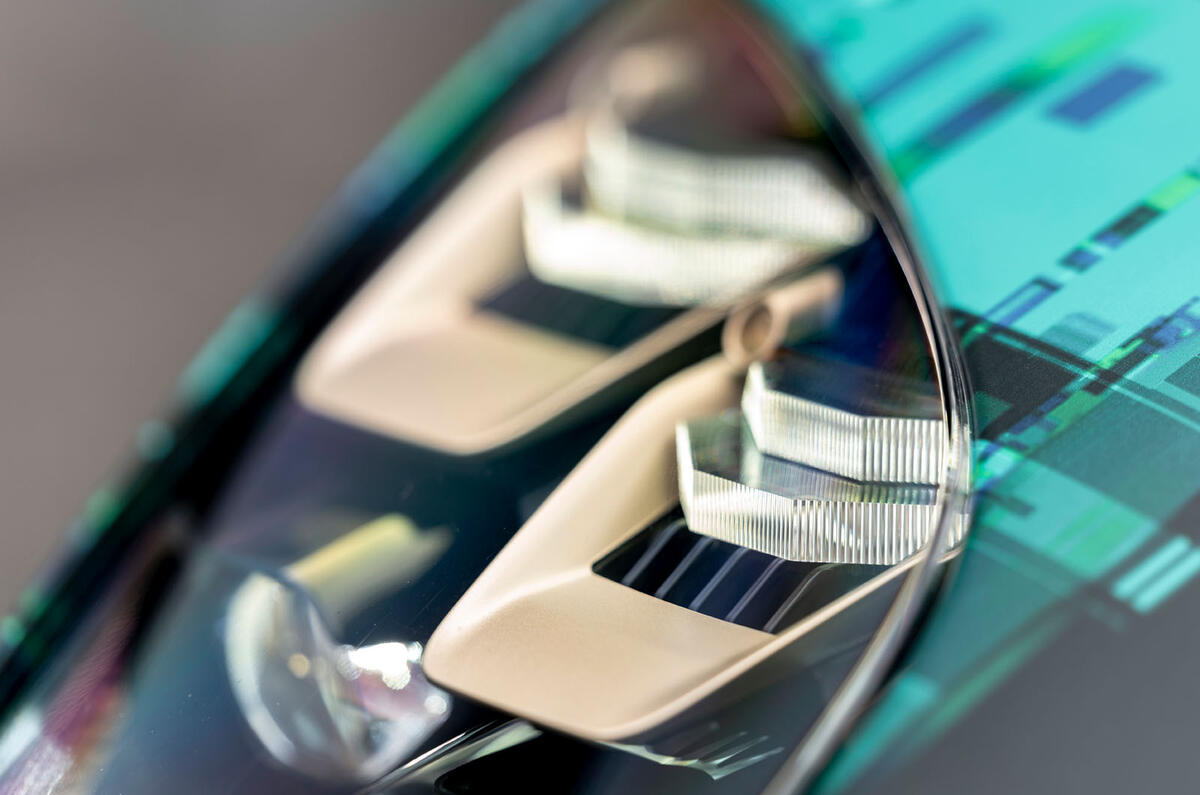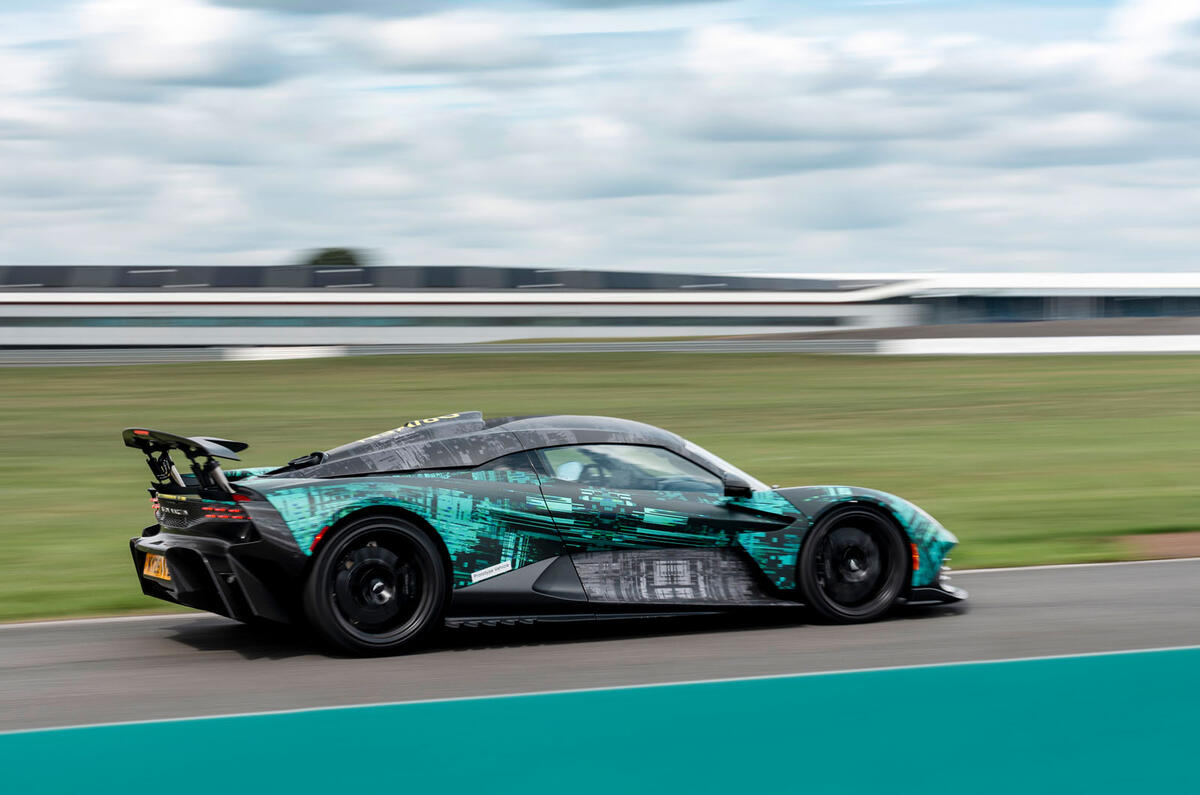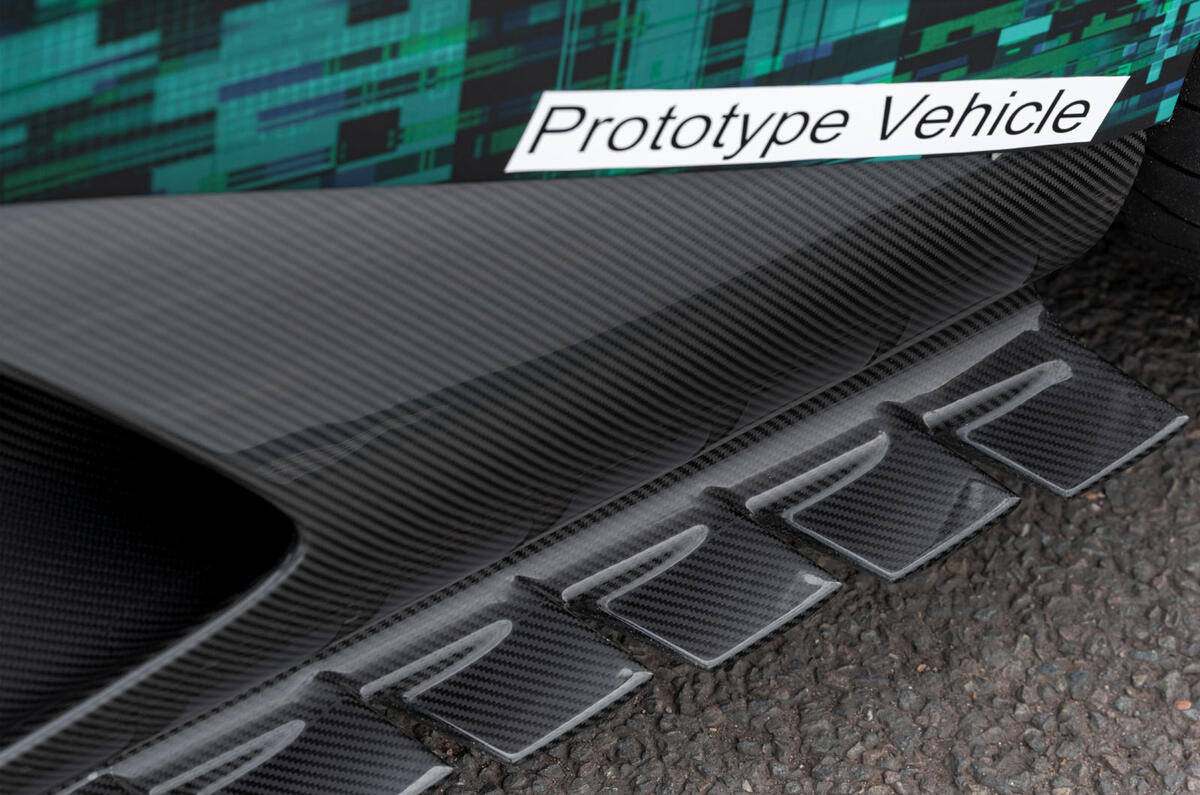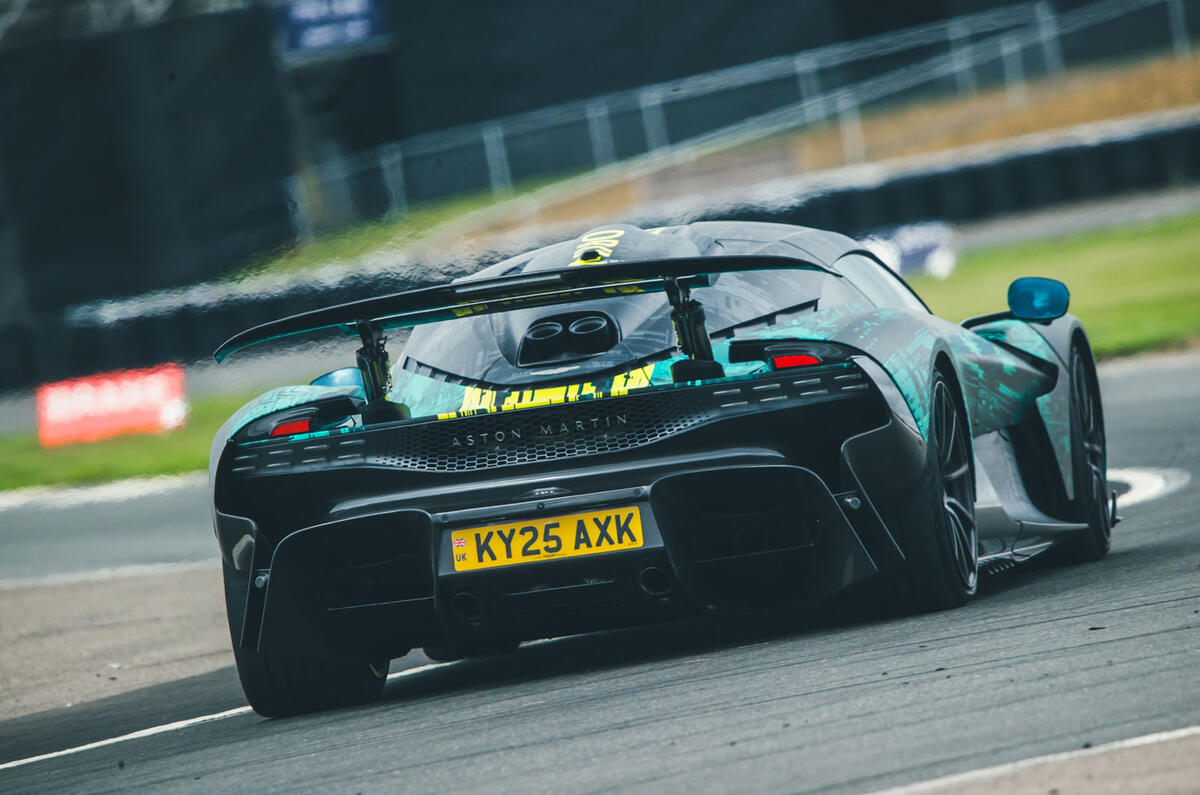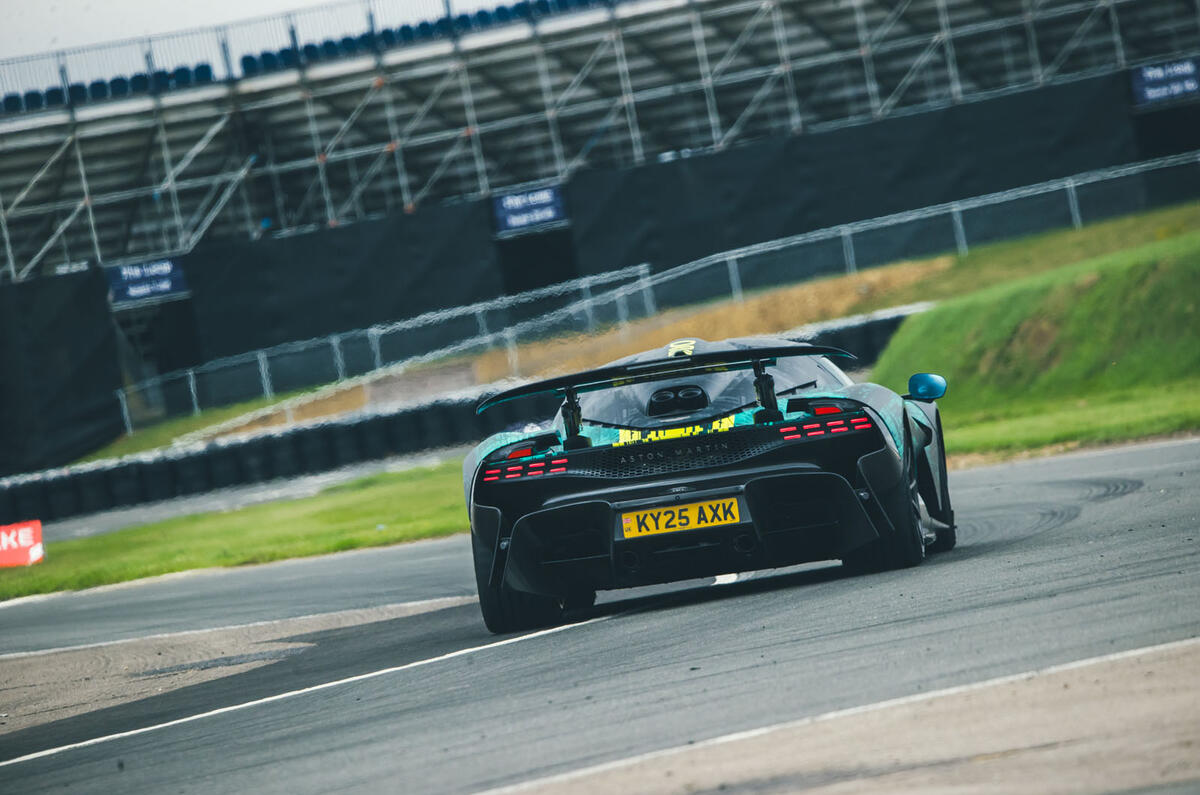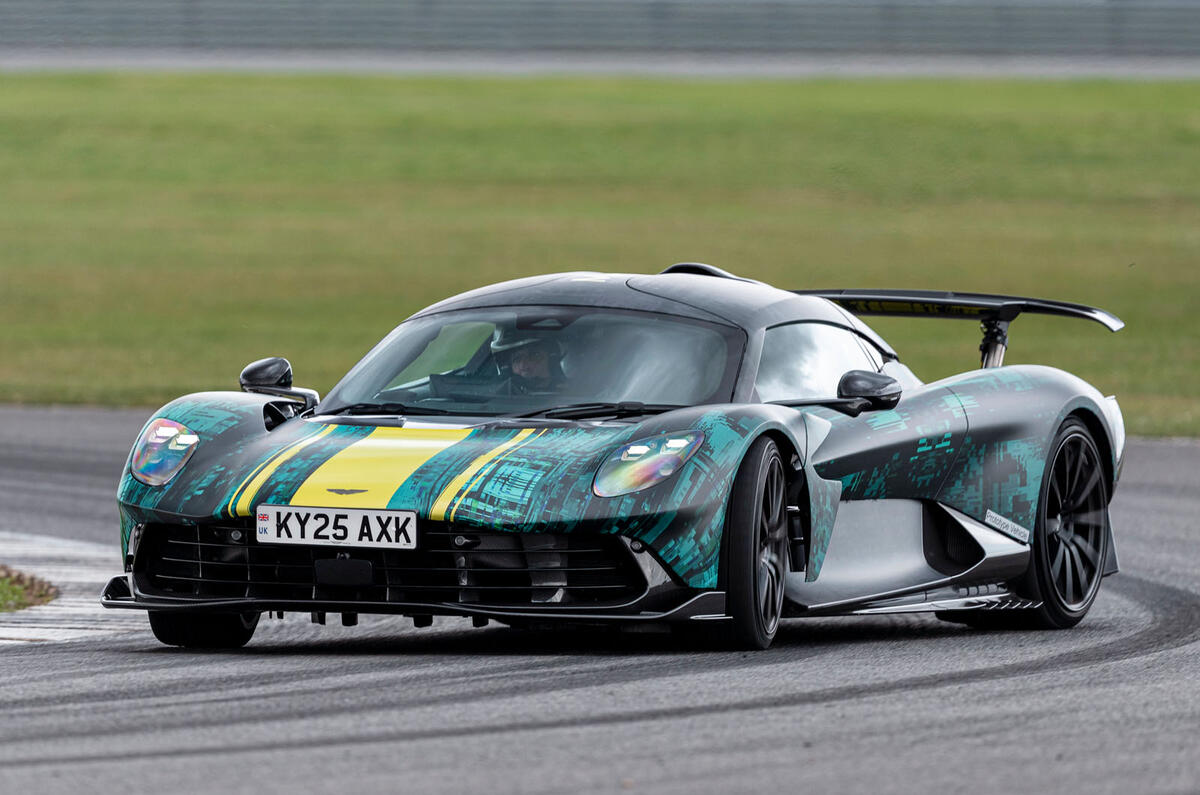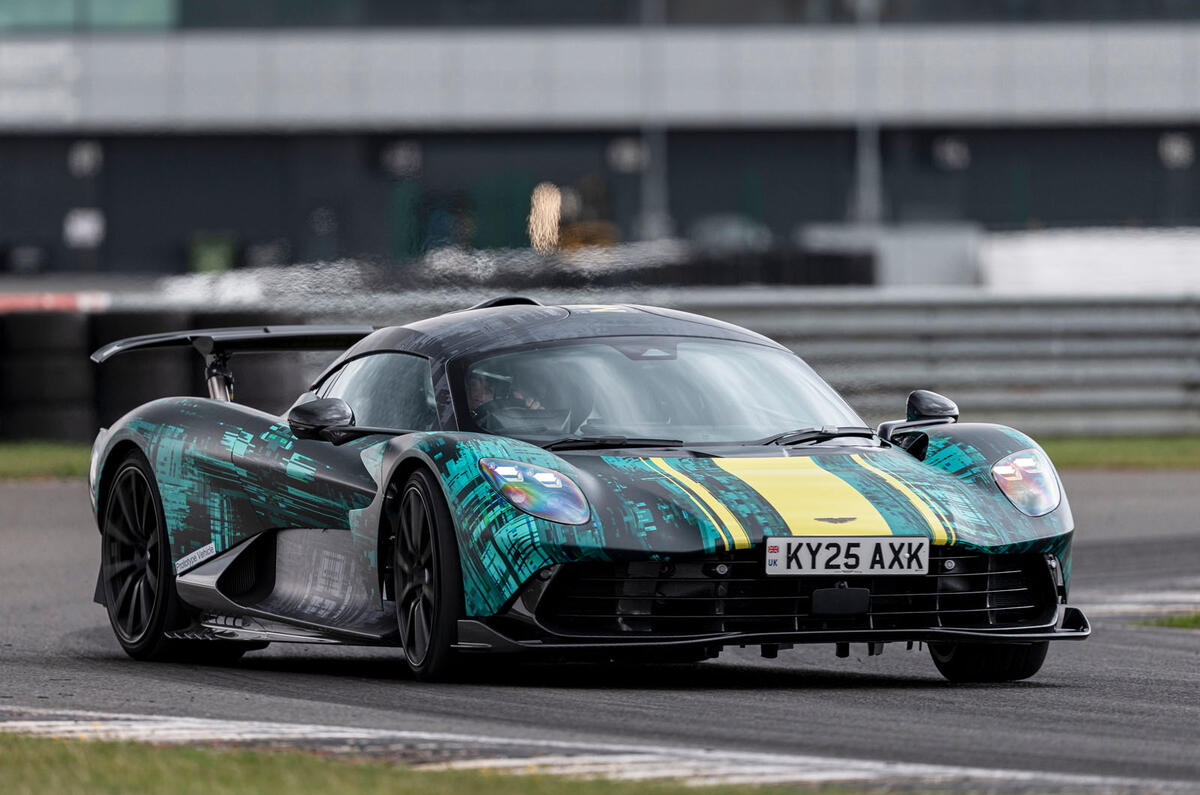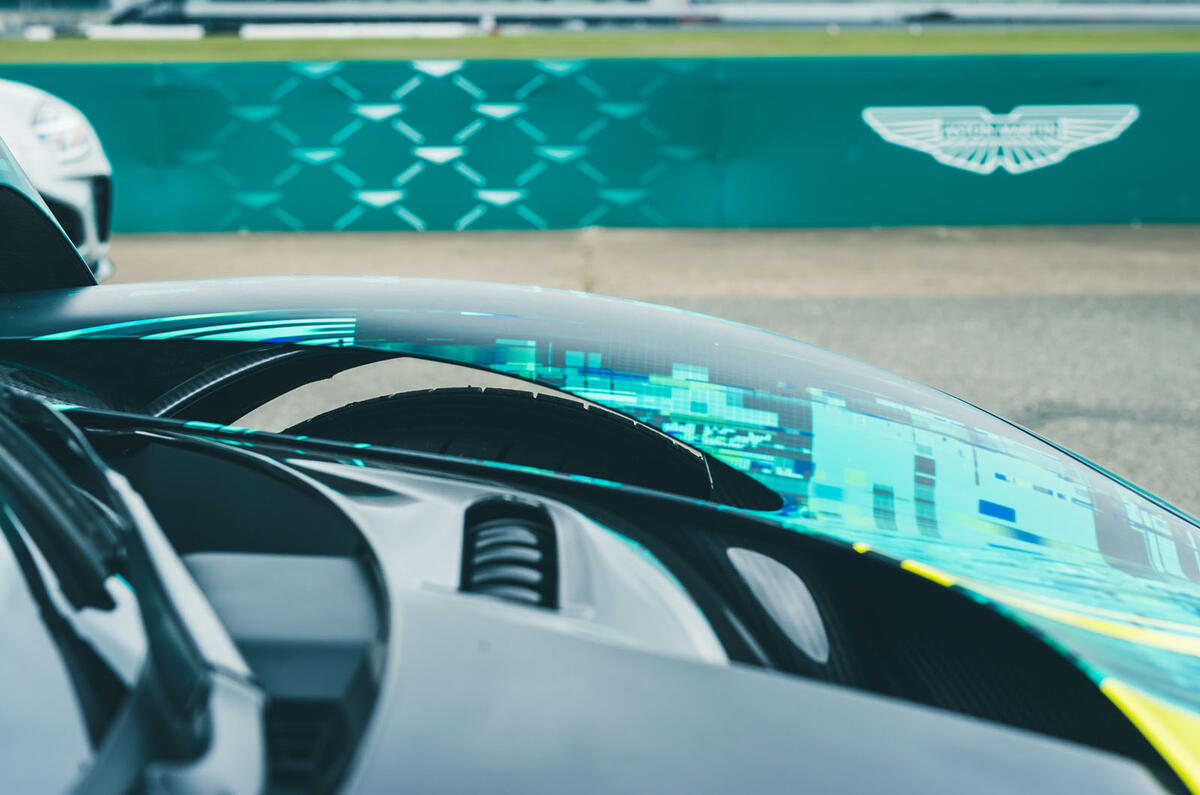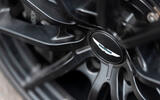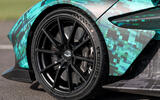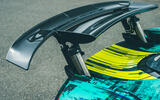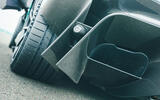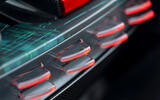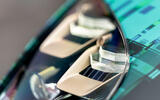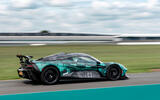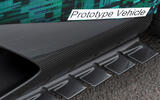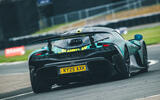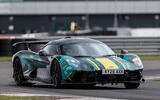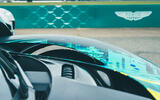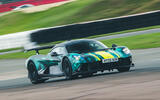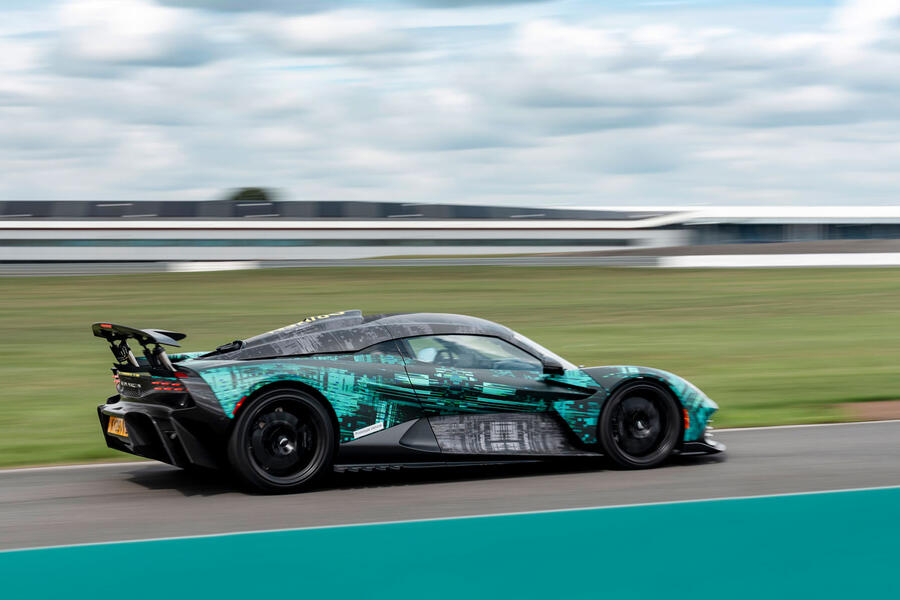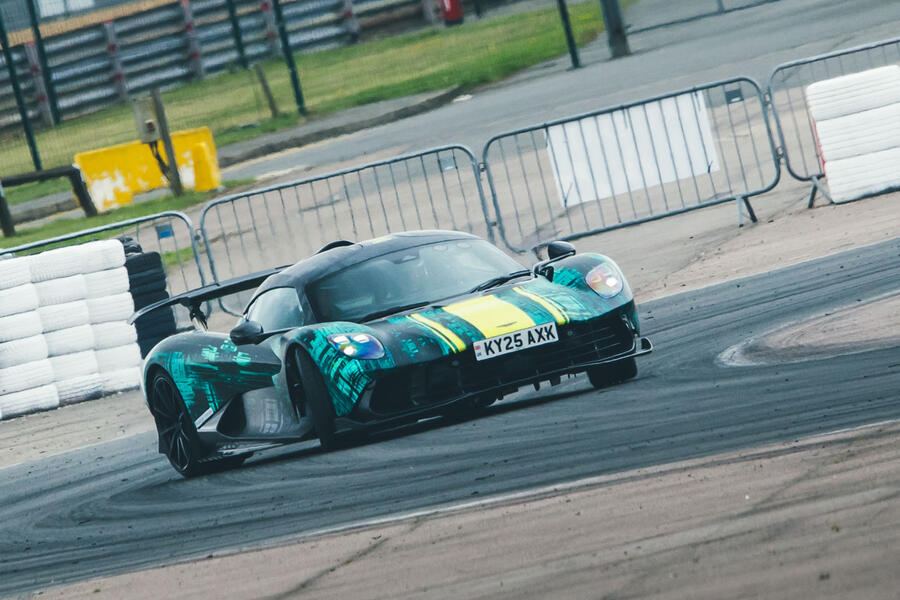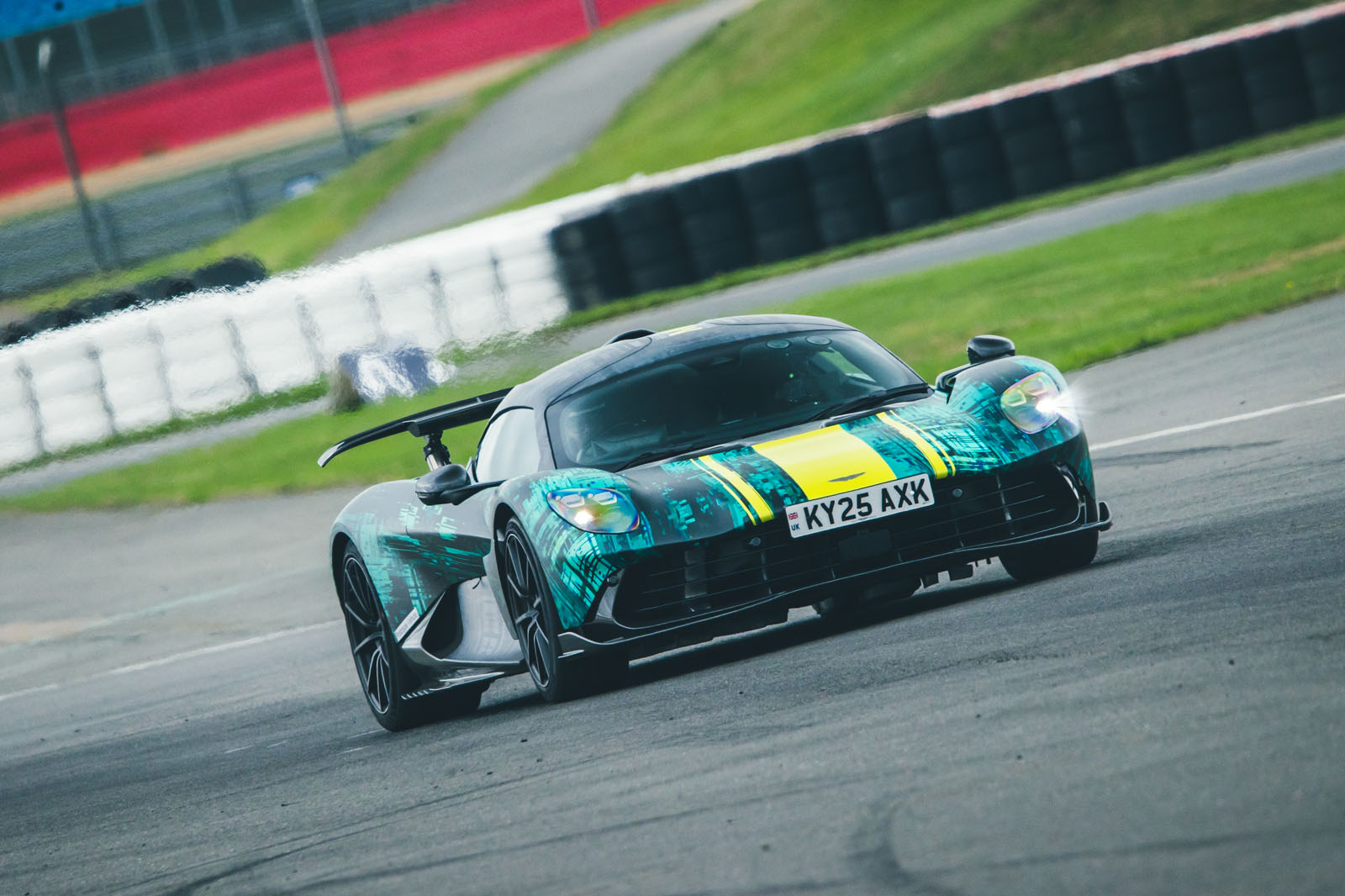The Valhalla’s major mechanical piece, its engine, takes Mercedes-AMG’s 4.0-litre V8 as a starting point. But rather than the usual Aston cross-plane-crank kind, it’s the AMG GT Black Series flat-plane version. Such V8s have 180deg planes and fires on alternate cylinder banks for more even gas flow and smoother primary balance than cross-plane ones – although they can suffer secondary vibrations.
In the AMG GT, the unit made 720bhp at 6700-6900rpm and 590lb ft from 2000-6000rpm. With larger compressors for the two hot twin-scroll turbochargers, new cams and new exhaust manifolds, that’s up to 817bhp and 632lb ft here. Remarkably, Aston claims both peaks come at 6700rpm (the first time I think I’ve come across this in a road car); it promises more details of how and why at the car’s final launch.
The V8 is supplemented by a motor in the eight-speed dual-clutch automatic gearbox attached to the shaft of the even-numbered gears. So the engine might be using third but, depending on load or throttle, the motor could support things while driving through, say, second, or fourth. This is a DCT in which both clutches may engage at the same time, so the motor can be geared to assist whatever the road speed.
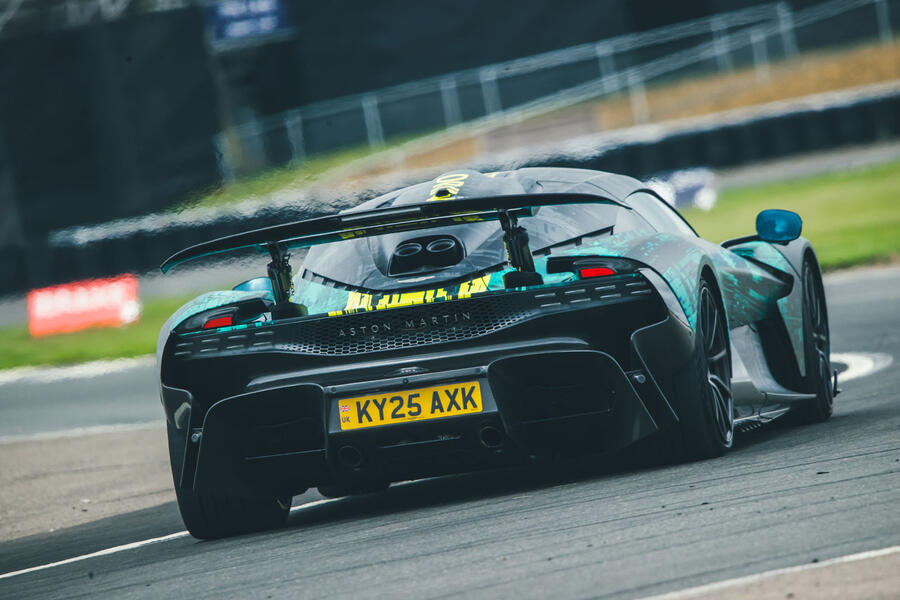
After the gearbox is an electronically controlled limited-slip differential for the rear axle. At the front there are two electric motors, one for each front wheel (the front motors also handle reversing).
Aston won’t give individual outputs for the three motors, but combined they add 248bhp. Meld these four power contributors together and their combined maximum outputs are 1064bhp and 811lb ft.
There’s also electric power steering, adaptive dampers from Bilstein, electric regeneration and brake-by-wire while slowing, plus active aerodynamics that can produce up to 600kg of downforce (wings and diffusers bleed off their effect at higher speeds to avoid making any more and overloading the suspension).
Aside from the carbonfibre tub, bodywork is also carbonfibre, as is the upper rear clam section, with aluminium subframes front and rear for the suspension, which is by double wishbones at the front and a multi-link set-up at the rear.



